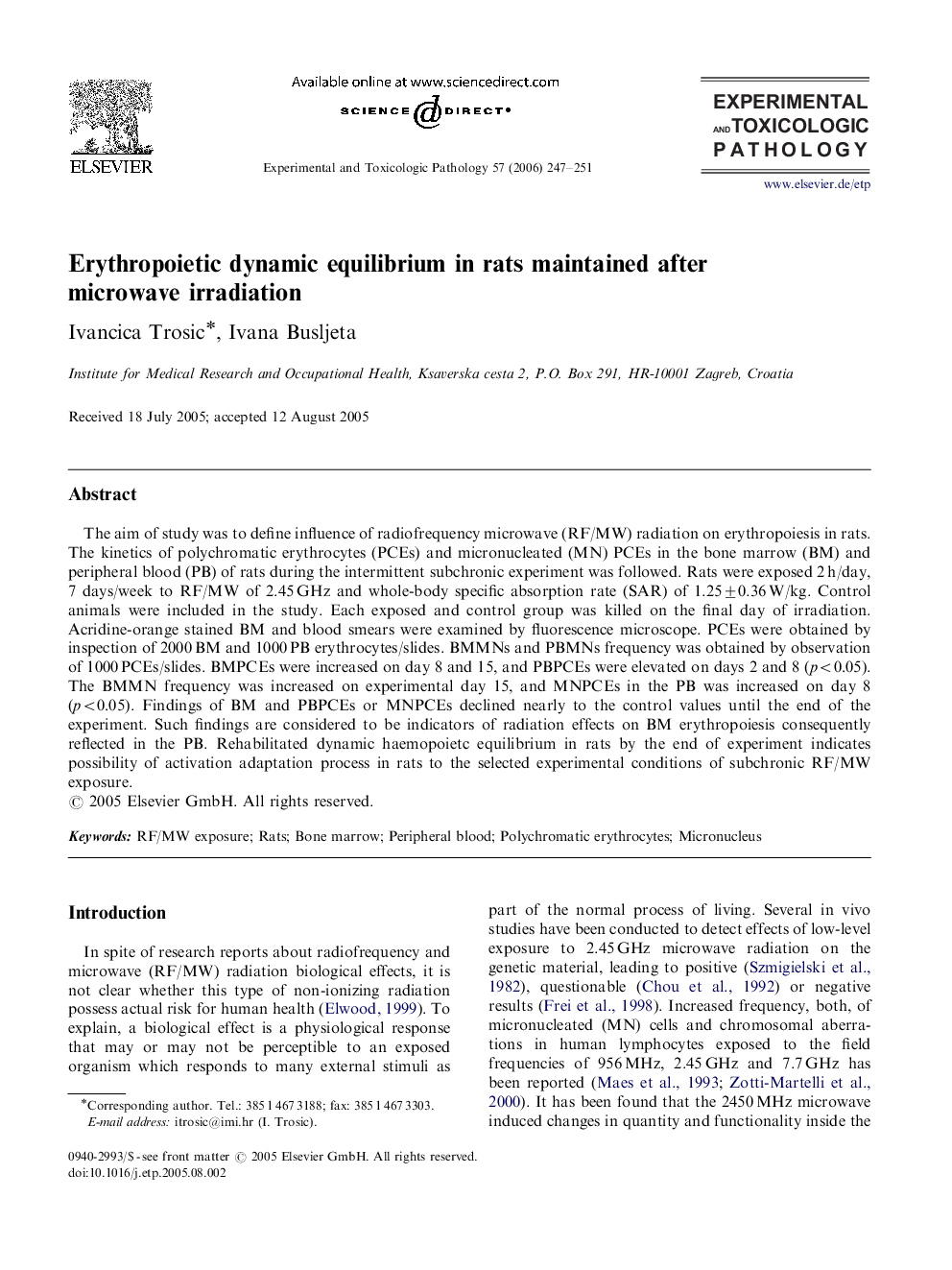| Article ID | Journal | Published Year | Pages | File Type |
|---|---|---|---|---|
| 2499542 | Experimental and Toxicologic Pathology | 2006 | 5 Pages |
Abstract
The aim of study was to define influence of radiofrequency microwave (RF/MW) radiation on erythropoiesis in rats. The kinetics of polychromatic erythrocytes (PCEs) and micronucleated (MN) PCEs in the bone marrow (BM) and peripheral blood (PB) of rats during the intermittent subchronic experiment was followed. Rats were exposed 2 h/day, 7 days/week to RF/MW of 2.45 GHz and whole-body specific absorption rate (SAR) of 1.25±0.36 W/kg. Control animals were included in the study. Each exposed and control group was killed on the final day of irradiation. Acridine-orange stained BM and blood smears were examined by fluorescence microscope. PCEs were obtained by inspection of 2000 BM and 1000 PB erythrocytes/slides. BMMNs and PBMNs frequency was obtained by observation of 1000 PCEs/slides. BMPCEs were increased on day 8 and 15, and PBPCEs were elevated on days 2 and 8 (p<0.05). The BMMN frequency was increased on experimental day 15, and MNPCEs in the PB was increased on day 8 (p<0.05). Findings of BM and PBPCEs or MNPCEs declined nearly to the control values until the end of the experiment. Such findings are considered to be indicators of radiation effects on BM erythropoiesis consequently reflected in the PB. Rehabilitated dynamic haemopoietc equilibrium in rats by the end of experiment indicates possibility of activation adaptation process in rats to the selected experimental conditions of subchronic RF/MW exposure.
Related Topics
Life Sciences
Agricultural and Biological Sciences
Animal Science and Zoology
Authors
Ivancica Trosic, Ivana Busljeta,
